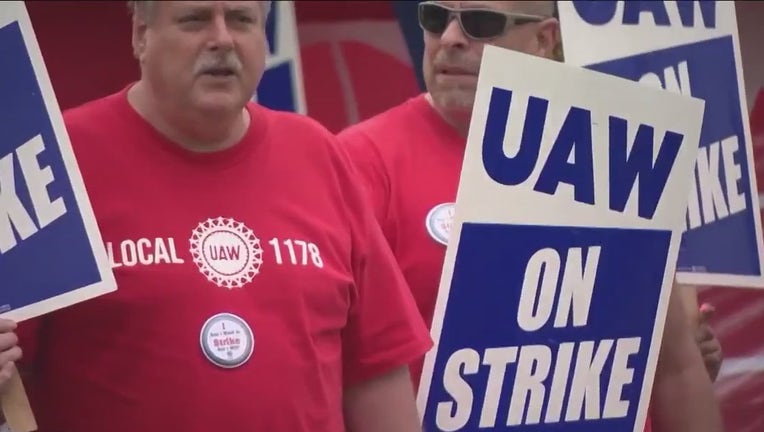Success of UAW strike shows growing leverage for labor

HOUSTON - A tentative agreement has been reached between the United Auto Workers and General Motors, bringing an end to weeks-long targeted strike against the big-three automakers. It's the latest in a growing list of labor successes and grievances.
While autoworkers have to vote on new contracts, national pharmacies, like Walgreens and CVS, are dealing with an informal walkout by employees demanding better working conditions and more staff.
SUGGESTED: University of Houston football could face legal action from NFL over Oilers-inspired uniforms
The walkout, dubbed "Pharmageddon" by organizers, is the third strike by pharmacists in a little over one month.
Labor organizers may be encouraged by the UAW, as it struck the nation's big-three automakers more than 7-weeks ago and secured lucrative new contracts and concessions.
"This contract demonstrates the incredible power that workers have when they are not afraid to use it," proclaimed UAW President Shawn Fain.
In the last months, west coast dockworkers and railroad workers threatened walkouts, that secured new deals. Hollywood writers struck, and negotiated a new contract, while the actors union remains on the picket line demanding better conditions. Labor experts say it all stems from a growing dissatisfaction that can't be ignored.
"They're trying to rebalance the power-dynamic, within firms, to squeeze out concessions for higher pay, and things like that," says Moody's Analytics economist Justin Begley.
"They're starting to go, 'you know what, there is a labor shortage; we are valuable, and we want them to see our value," adds business strategist Darin Kidd. "So, they're getting that little extra boost of confidence to go in and ask for money."
Kidd says employers will do well, to be introspective and perhaps make their workplaces better off by listening to what their employees need.
"What can I do to attract good, quality employees? What can we do to retain those employees," he says. "If you ask good questions, you get good answers."
That 'labor shortage' that was mentioned is no small thing. By one analysis, there were about 2.5 million new workers entering the workforce each year 50 years ago. Fast-forward to now, and baby-boomers are quickly retiring, while the number of new workers is down to about half a million annually. It means the services of remaining workers will be in demand, and their demands may be inescapable.

